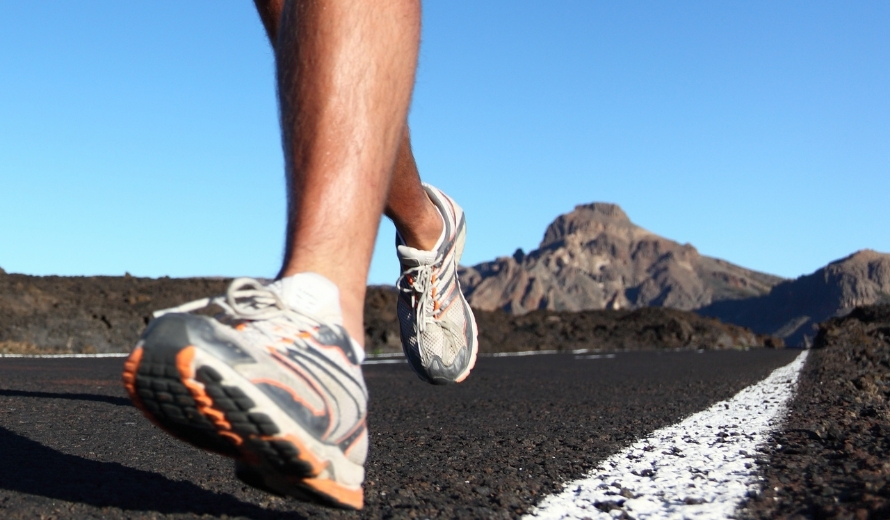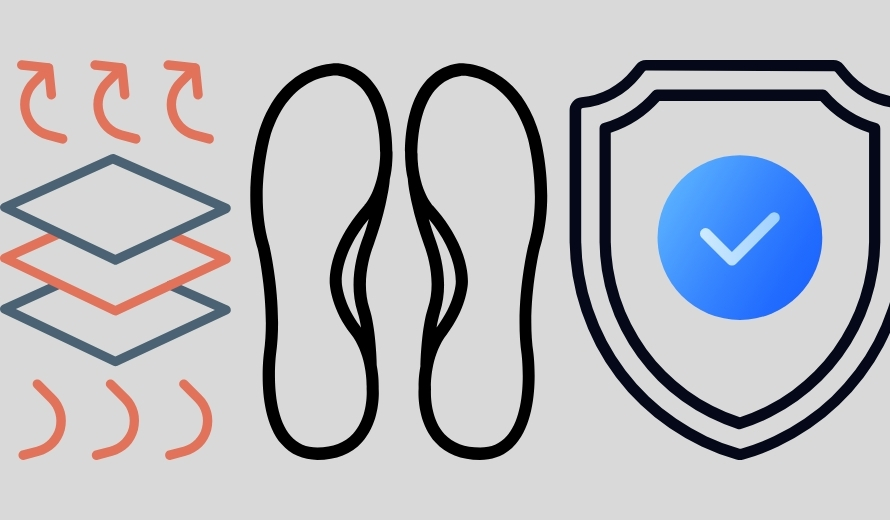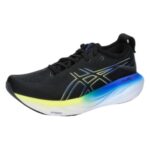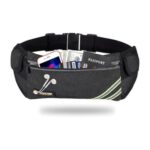Lightweight running shoes are essential for long-distance running. They make you less tired and help you run better by being light on your feet. These shoes reduce muscle strain and injury risks, allowing you to focus on training goals. They provide good cushioning for support and comfort during long runs, absorbing impact and reducing joint stress. The right lightweight shoes enable longer runs and help achieve new training goals. Choosing the right shoes is crucial for better performance in physical activities. Well-fitting shoes offer support, cushioning, and injury prevention by reducing strain on muscles and joints. They enhance efficiency, reduce tiredness, and improve endurance. Selecting shoes tailored to our needs and activities helps us perform at our best and lowers the risk of injury or discomfort.
Table of Contents
1.The Need for Lightweight Running Shoes

Long-distance runners know how important it is to find the right lightweight running shoes. These shoes give a feeling of freedom and flexibility that can help improve performance over long distances. They make your stride more efficient and reduce fatigue, helping you last longer. Lightweight running shoes also help keep your feet cool during long runs. The simple design of these shoes promotes natural foot movement, reducing the chance of injury and making you more agile on different surfaces. Choosing lightweight running shoes can make your runs smoother and more enjoyable, allowing you to push yourself further.
Lighter shoes help runners go faster and feel less tired. When runners wear lighter shoes, they can run more efficiently. Lighter shoes make it easier to run and use less energy, allowing runners to run faster. Lighter shoes also reduce stress on joints and muscles, making runners less tired and helping them recover faster after long runs. This is beneficial for long-distance runners who want to improve without harming their bodies. Wearing lighter shoes can change how runners train, enabling them to run faster and longer without heavy shoes holding them back.
Comfortable lightweight running shoes are essential for training. They offer support and agility, helping runners push themselves without sacrificing comfort. Good cushioning and stability improve performance and prevent injuries. These shoes also help maintain proper form and stride efficiency, boosting overall endurance. By reducing fatigue and discomfort, runners can focus on their goals without distractions. Quality lightweight running shoes with good support can greatly improve long-term performance and enjoyment of running.
2.Top Features to Look For

2.1 Breathability: Breathable materials are crucial for runners to keep their feet cool and dry during long runs. These materials, such as mesh fabrics or moisture-wicking technologies, help prevent discomfort and potential injuries by reducing sweat and improving airflow. They also lower the risk of blisters and irritation, promoting overall foot health. Choosing running shoes and socks with breathable materials is important for performance and foot longevity. Prioritizing breathability in your gear is key to optimizing your running experience and avoiding foot problems like athlete’s foot. Remember, breathable materials are a necessity, not a luxury, for happy and healthy feet while running.
2.2 Cushioning: Good cushioning is important for protecting our joints during long runs or walks. When we run or walk for a long time, the impact from each step can travel up to our ankles, knees, and hips, which can cause discomfort or injury. Cushioning helps to absorb some of this impact, reducing the strain on our joints over long distances. It also makes us more comfortable and less tired. When we wear cushioned shoes or insoles, our feet are better supported, so we are less likely to feel pain during a run or walk. This can improve our performance and reduce the risk of long-term joint problems. Investing in good cushioning is not just about feeling good now, but also about protecting our joints in the future.
2.3 Durability: Durable running shoes are important for distance runners because they can wear out quickly from the impact and stress of running. High-quality shoes last longer and help prevent injuries. Materials like carbon fiber and strong rubber make shoes more durable for long runs. Durability also shows a runner’s dedication to their sport. By choosing tough materials, runners show they are committed and determined to overcome challenges. Durable shoes are not just practical; they represent resilience and strength in every step towards personal goals.
3.Top Brands in the Market
3.1 Nike

Nike has consistently remained at the forefront of innovation in athletic wear, and its lightweight running shoes for long distances are no exception. One standout model is the Nike Air Zoom Pegasus series, a perfect blend of responsiveness and comfort. The integration of Zoom Air units offers unparalleled cushioning that absorbs impact while providing a spring-like effect, helping runners maintain momentum even during extended runs.
Moreover, Nike’s Flyknit technology creates an almost second-skin fit without adding extra weight, ensuring your foot is supported yet agile with every stride. Another remarkable feature is the use of engineered mesh in the upper; this enhances breathability while strategically reinforcing crucial areas to maximize durability. All these elements come together to create lightweight running shoes that don’t compromise on performance or longevity, ideal for tackling those daunting long-distance trails or marathons.
3.2 Adidas

Adidas has consistently pushed the envelope in creating footwear that combines technological innovation with comfort, making it a standout choice for long-distance runners. The brand’s focus on incorporating advanced materials like Boost and Primeknit technologies not only reduces weight but also ensures optimal energy return and flexibility. This dual benefit translates to shoes that help you maintain your stamina mile after mile, without burdening your feet.
Another noteworthy feature of Adidas running shoes is their superior grip, crucial for various terrains one might encounter over long distances. The Continental Rubber outsoles offer impeccable traction whether you’re running through wet city streets or dusty trails. Furthermore, the sleek yet supportive design accommodates different foot shapes, allowing a personalized fit that’s rare in lightweight models. For those who prioritize sustainability alongside performance, many Adidas options are crafted from eco-friendly materials, adding an ethical dimension to your run while keeping you ahead of the pack.
3.3 Brooks

For those who hunger for a blend of performance and comfort in their long-distance running shoes, the Brooks Ghost 14 emerges as an indispensable choice. This shoe strikes a harmonious balance between cushioning and a responsive feel, enabling runners to glide through miles without compromising on pace or support. The DNA Loft foam technology adds just the right amount of plushness underfoot, all while maintaining an impressively lightweight profile that won’t weigh you down over longer distances.
Another highlight is the seamless fit provided by the engineered mesh upper, which adapts effortlessly to your foot’s natural movement. Runners frequently praise its breathability and snug yet non-restrictive experience, a crucial factor during those grueling final miles of a marathon or half-marathon. With a reliable grip that performs well across diverse terrains, from city pavements to countryside trails, Brooks ensures your journey is supported every step of the way. So if you’re striving for that elusive personal best or simply seeking a smoother run, upgrading to Brooks might just be your perfect stride forward.
3.4 Asics

When it comes to injecting a perfect blend of comfort and durability into your long-distance runs, Asics has always been a standout. Muscle fatigue can be one of the silent killers in extensive running sessions, but with Asics’ innovative FlyteFoam technology, runners benefit from lightweight cushioning that propels them forward without extra weight. The FlyteFoam consistently adapts to your stride, offering remarkable energy return and helping runners maintain their momentum over longer distances.
Asics shoes also excel in providing superior stability, crucial for those logging high-mileage weeks. The DuoMax Support System integrates a dual-density midsole positioning that enhances support and stability by evenly distributing pressure across the sole. These features make Asics not only supportive but also incredibly responsive, perfectly suited for long-distance enthusiasts who seek reliability without compromising on speed or agility. Explore these characteristics further as you lace up a pair for an unforgettable running experience designed by experts who understand precisely what distance runners need.
3.5 New Balance

Discover the marvel that is the New Balance 2.5, a stellar addition to the realm of lightweight running shoes designed for long-distance athletes. Engineered with meticulous attention to detail, this shoe seamlessly intertwines comfort and performance, ensuring you can stay focused on your run without being encumbered by heavy footwear. With its advanced cushioned sole, it offers an optimal balance between responsiveness and durability, allowing for consistent energy return with each stride.
What sets the New Balance 2.5 apart is its innovative use of breathable materials that work tirelessly to keep your feet cool and dry during those grueling miles under varying conditions. Combine this with a supportive yet flexible upper design tailored to adapt naturally to your foot’s contours, and you have a shoe that’s not just along for the ride but actively enhancing every step you take. This model is particularly noteworthy for runners who prioritize both speed and endurance; it’s almost like having a running partner committed solely to elevating your performance.
4.Tips for Proper Shoe Fit

4.1 Measuring Your Foot Correctly
To find the best lightweight running shoes for long distances, start by tracing your foot on paper while standing. Use a ruler to measure the length and width of your foot, noting any differences between your left and right foot. Knowing your foot arch type is also important for comfort. You can do a wet test by stepping on a dark paper after wetting your foot to determine if you have flat, medium, or high arches. Using insoles or shoes made for your arch type can help reduce strain and prevent injuries during long runs. Pay attention to even small differences in measurements as they can affect your performance when running long distances.
4.2 Trying Shoes at End of Day
When choosing lightweight running shoes for long distances, remember to try them on at the end of the day. Your feet expand during the day from walking and activity, so they are largest in the evening, similar to how they might swell during a long run. This helps you get a better fit and avoid discomfort during your run. Testing shoes in the evening also lets you see how they feel under realistic conditions. If they feel snug and supportive then, they will likely perform well during tough workouts. Minor discomfort in the morning can turn into major pain after a long run. So, when shopping for running shoes, try them on in the evening for better comfort and performance.
5.Conclusion & Recommendations
In conclusion, selecting the best lightweight running shoes for long distances can significantly enhance your performance and enjoyment. The key lies in balancing weight, support, and comfort to match your specific running style and needs. Lightweight shoes minimize muscle fatigue, allowing you to maintain optimal speed without sacrificing stability or cushioning over those grueling miles.
Moreover, reflect on your individual running style and terrain preferences when choosing your next pair. A runner who prefers asphalt may benefit from shoes with more durable outsoles, while those fond of trail running should prioritize superior grip and stability features. Additionally, keep an eye on flexibility versus rigidity: flexible soles often suit runners who favor minimalistic designs, whereas those needing extra arch support might lean toward more structured options. Your perfect pair should feel like an extension of you, propelling each step with ease and efficiency through every mile.















